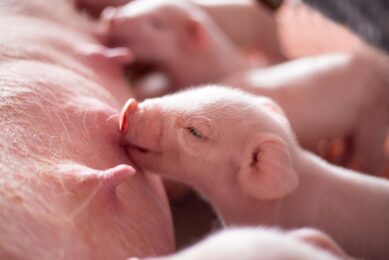Monitoring screams in weaners detects tail biters early

A team of German researchers monitored pig screams to identify tail biting events in weaner pigs. They published about their findings in Scientific Reports.
In intensive swine production systems, early identification of tail biting and intervention are essential to decrease tail lesions and their negative impact on health and welfare and economic loss. Timely detecting and removal of biters is an effective but challenging and time-consuming intervention strategy.
About the study
The team selected 288 weaner pigs for this trial, that lasted 39 days. They used a video camera connected to an audio module and a microphone in each pen to record video and audio of the pigs. They recorded the number of hanging tails in the pen and tail lesions using a 4-point scoring system. When the farm staff observed a pig showing special interest in biting and at least bit the tail of other pigs 2 times aggressive, they removed the biter from the pen to maintain animal welfare. Then, they analysed videos and audios and characterised pig screams. They documented duration of the scream, the reason for the scream, and the exact time of day it occurred.
Individual variation in tail biting
Tail biting started slowly during this trial and the intensity of scream-detected tail biting varied between individual pigs. In addition, patterns of scream-detected tail bites per hour were different during this trial.
In which situations did screaming occur?
Most screams originated from tail biting events, with 34.26% of the screams caused by tail biting during the daytime and 18.67% because of tail biting at nighttime. Other causes of screaming included pigs stepping with on another pig’s tail, mounting behaviour, extreme belly nosing or fighting, competing for feed, human contact, removal of biter, and frightened pigs.
Duration of screams
Duration of screams due to tail biting was not different between daytime and nighttime. However, those durations caused by foot on tail, human contact, and mounting were different. The length of the screams caused by tail biting ranged from 0.1s to 4.2s.
Tail lesion scores and tail posture
Tail lesion scores and the percentage of hanging tails increased from the day of detecting the first biting event. After removing the biters, the sum of tail lesion scores decreased within a few days.
The authors concluded that monitoring pig screams in weaning pigs is reliable to detect and remove tail biters early and to reduce tail biting.











